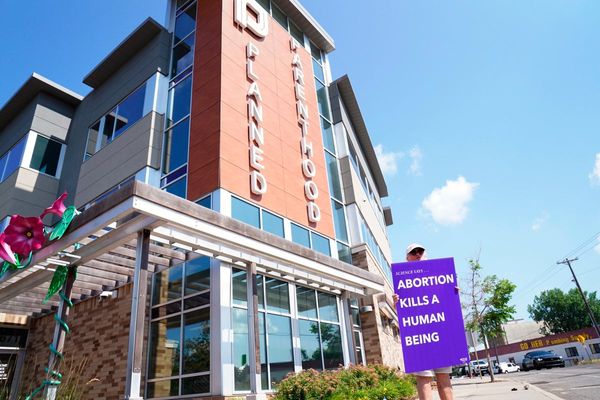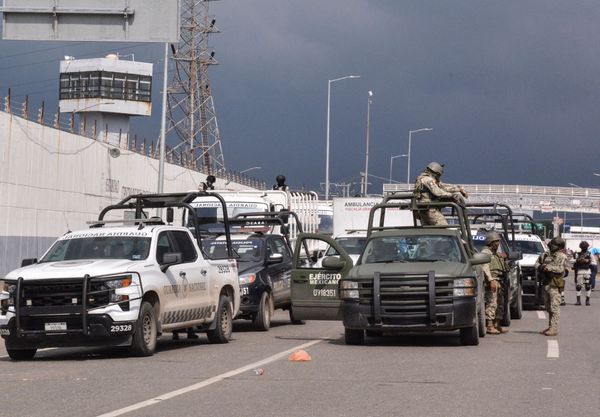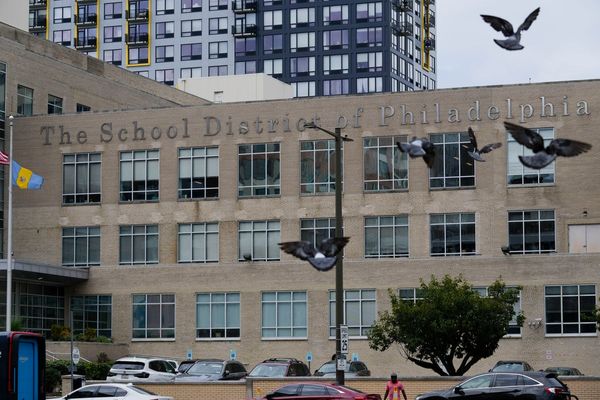
A week before Qantas chief executive Vanessa Hudson diverted her maiden annual profit of $1.25 billion, QF6 — a B787 landing in Perth from London — blew a tyre that damaged its fuselage.
It’s an apt enough metaphor for the company’s fall in profits — down 28% but from record levels. It’s also emblematic of the problems that Hudson said the company has been having in its international division, the one which has done the most damage to what is otherwise the result of a still well-oiled senior industry monopolist.
Qantas revenue jumped 10.7% to $21.9 billion but its operating margin fell to 10%, down from 13.5% in 2023 as Hudson was forced to spend $230 million to make some improvements to the customer experience. But anyone who has been on the airline or in its lounges recently knows that more is needed. At some point, years of relentless cost-cutting become self-defeating, especially in the face of well-funded and polished offshore competition with newer aircraft. Hudson backed the strategy as finance chief and she’s now paying the price.
The ongoing cost of living crisis and quite probably dissatisfaction with deteriorating aircraft and service has seen passengers switch from Qantas’ pricey mainline aircraft to low-cost Jetstar. The low-cost arm grew its domestic network by 15% during the year — so look no further for the key reason that Bonza and Rex collapsed (the remains of the latter are still on government-backed life support). Jetstar and the loyalty division that runs the frequent flyer scheme were named as the best-performing divisions in the latest results.
The damaged Qantas plane remains in Perth and the egregious lack of aircraft that Hudson’s predecessor, Alan Joyce, bequeathed to her means that Qantas’ international schedules have once again been thrown into havoc.
Pilots, who agreed to speak on the condition of anonymity, told Crikey that Qantas’ international business is something of a mess, plagued by delays and cancellations. In the latest report by the competition regulator on the sector, Qantas topped cancellations in June with 3% of all flights. It has been very much self-inflicted by the dual strategies of delaying ordering new long-range aircraft and outsourcing all its heavy maintenance offshore.
Qantas brought back two more of its Airbus A380 aircraft during the year — there are still four more to come — but this was “offset by an anticipated increase in competitor capacity … although the decline slowed in the second half”, Hudson said. Again, this problem may prove thornier in the current year, with Turkish Airlines ramping up operations while Hudson has signalled more delays in new aircraft deliveries, which is a global issue. Hudson told a recent pilots meeting that the company was struggling to compete on European routes.
But for an airline that begged — and received — $2.5 billion in government subsidies during the pandemic, which it never paid back, Qantas is understandably in rude financial health, buttressed by a more than 60% domestic market share that will only expand after the collapse of smaller players Bonza and Rex. And let’s face it, the profit and bonus-obsessed Joyce was always going to manage his exit (as slightly fast-tracked as it was) at the peak of the airline’s profits.
Qantas promised that it would finally resume dividends for shareholders next year — the first time since the COVID-19 pandemic. In the meantime, shareholders get yet another buyback, $400 million this time, to boost the stock price while staff and passengers face the same level of cost-cutting. It’s an interesting, contradictory equation from a CEO who claims to be trying to restore the airline’s tattered image. A decision must have been taken to plunge that into customer service and revamping aircraft instead.
And while a buyback is business as usual, the extra $60 million — about 15% of the buyback — that it cost to settle a pay dispute with cabin crew was bemoaned by Hudson as an impost because it would drive up airfares. In the results briefing she blamed the government’s same job, same pay rules. It’s always worth mentioning that the Qantas share price is still heavily weighted in the company’s executive bonus schemes. Choices, Vanessa.
It’s a good win for Flight Attendants’ Association of Australia boss Teri O’Toole, who, like her engineering counterpart Steve Purvinas, was unafraid to stand up to Qantas’ aggressive industrial relations team.
Hudson claimed that Qantas now pays three times what its Asian and Middle Eastern counterparts pay cabin crew. It’s hard to check this, but insiders say this does not take into account the generous accommodation, tax and bonus arrangements those airlines give staff. Qantas is also adept at using offshore-based cabin crew from the UK, New Zealand, Singapore, Thailand, Malaysia and Indonesia — many of whom are paid a fraction of their Australian counterparts.
“This is a far cry from the Qantas of just a couple of years ago, which declared open war against their cabin crew employees and held a gun to the heads of workers with applications to terminate their enterprise agreement,” O’Toole said.
Still, let’s see how this holds. Hudson faces further tests with her short-haul pilots deeply unhappy about their latest pay and condition offer — and at odds with their more compliant leadership — due to come to a head in the coming months. She also remains in the Fair Work Commission with Perth-based pilots from Qantas’ Network Aviation subsidiary, many of whom are jumping ship. The broader pilot shortage was conveniently ignored in discussions on the outlook for this year.
Hudson and her spin doctors were keen to talk her up as a leader who talks to passengers and staff — and listens.
But pilots are angry that they are being tossed a $500 travel voucher, announced with the results, as a “bonus” given to 23,000 non-executives, whereas those at airlines like Singapore, Delta and Qatar are given bonuses — more in line with those handed to executives — of several months’ salary.
There is still the final decision from the Federal Court on how much Qantas must pay for the illegal sacking of 1,700 ground staff, and the company has set aside $70 million. If this is borne out the company will see such a low figure as a win, albeit an ugly one.
Still, banking a win with the government’s recent airline-friendly aviation white paper should see the airline continue to operate with impunity. Sure, there are signs that Hudson is starting to make changes beyond the PR spin, including the recent departure of key Joyce-era executives, the FAAA deal, and what insiders say is a move towards recentralising the company, winding back the slice and dice Joyce era.
But for staff and customers, these changes can’t come quickly enough.







